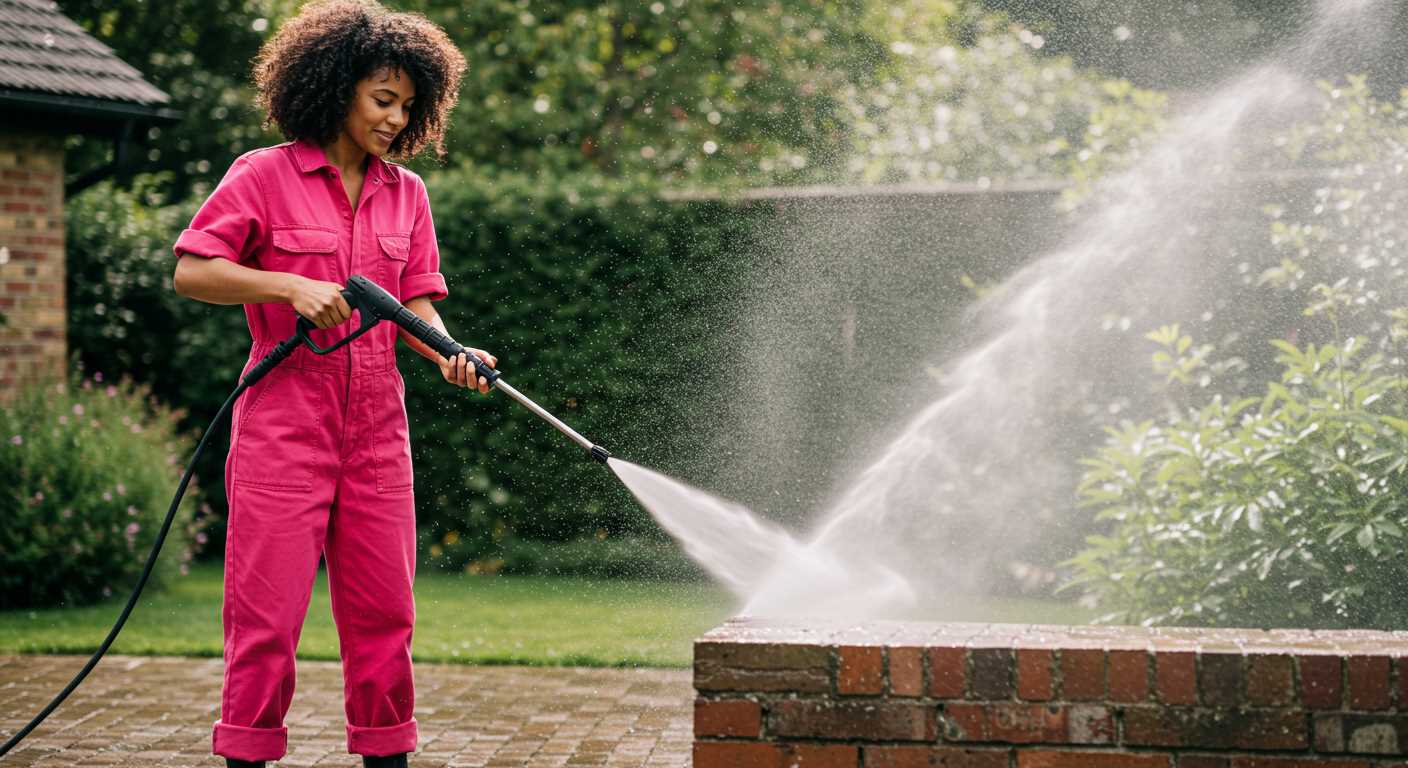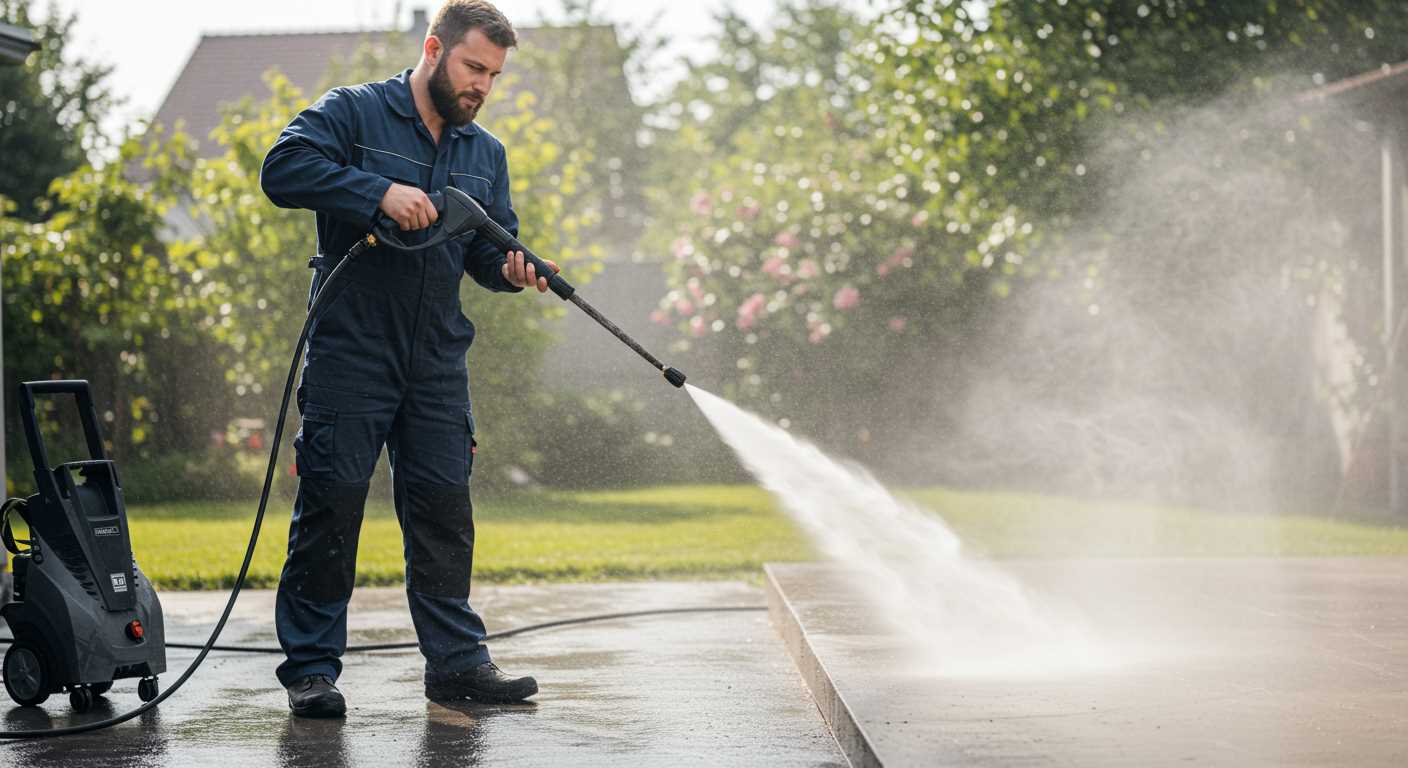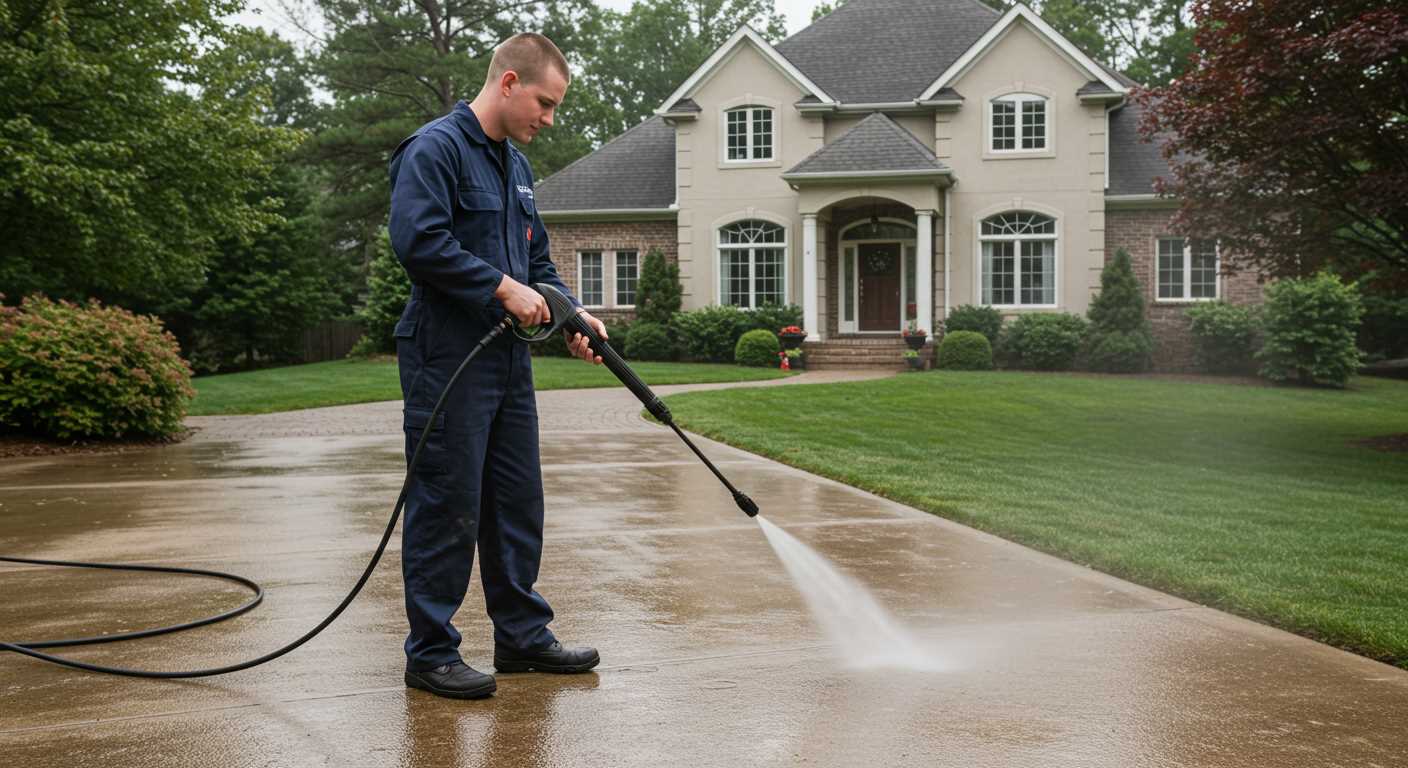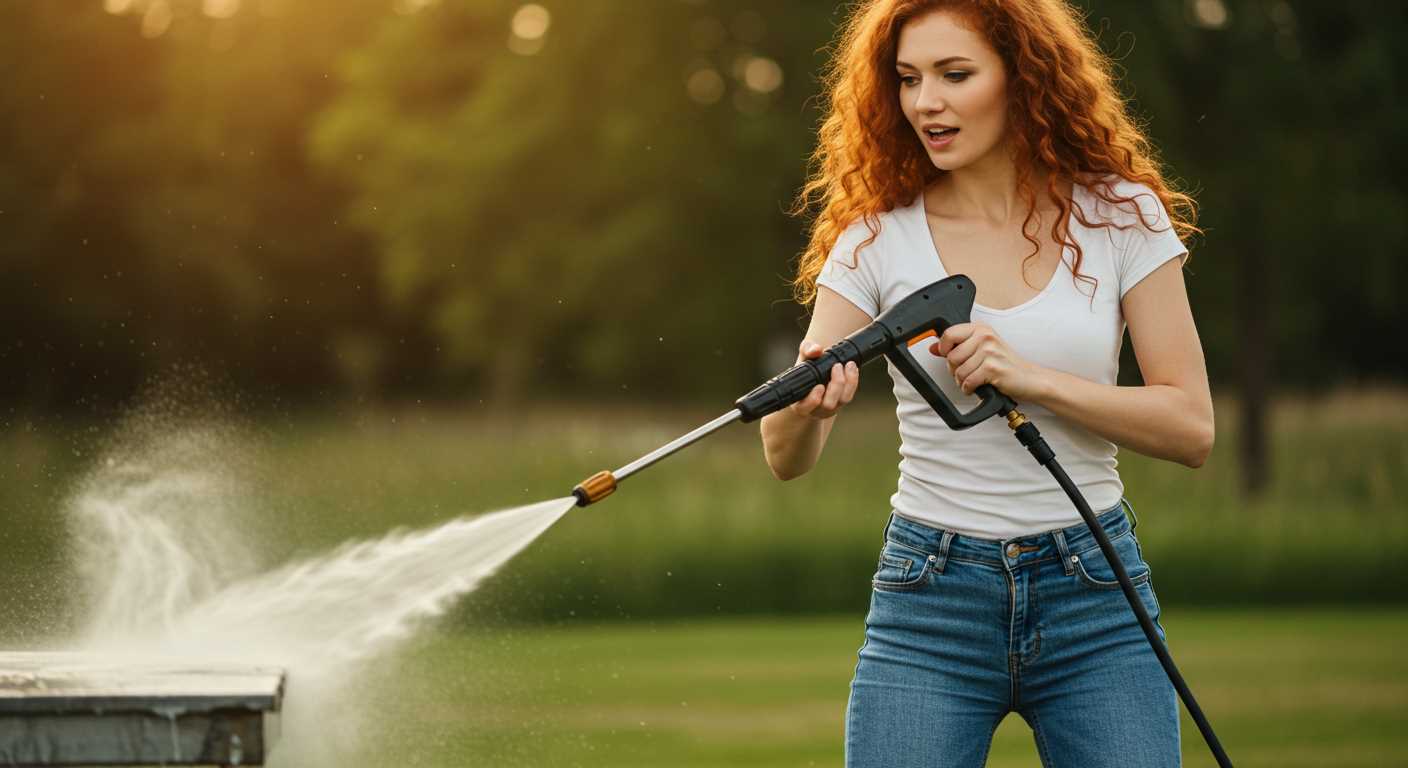



Yes, it is possible for a high-pressure cleaning device to function effectively even when the supply levels are not optimal. However, the efficiency may be significantly reduced, and certain considerations must be taken into account to achieve satisfactory results. One key factor is the specific model; some units are designed to handle lower flow rates better than others.
For best outcomes, I recommend checking the manufacturer’s guidelines regarding minimum flow requirements. Generally, devices require a flow rate of at least 2 to 3 gallons per minute (GPM) to operate efficiently. If your supply is below this level, it can lead to a lack of pressure and inadequate cleaning performance.
Another aspect to keep in mind is the use of suction hoses or water tanks. These options can help maintain a consistent supply, allowing the cleaner to draw water directly from alternative sources. Remember to ensure that your alternative source can deliver adequate volumes continuously. If using a tank, aim for a setup that provides an ample supply to avoid interruptions during use.
Pressure Cleaners and Insufficient Flow
For optimal results, these machines require a minimum flow rate around 5-7 litres per minute. If the supply falls below this threshold, expect reduced effectiveness and potential strain on the motor.
To overcome inadequate flow, consider using a booster pump to enhance the supply. This device can increase the incoming flow, improving performance significantly. Regularly check for blockages in the hose or fittings, as even minor obstructions can further diminish flow rates.
Utilising the cleaner with a low flow may lead to overheating, which risks damaging internal components. Always monitor the machine during operation and avoid prolonged use under these conditions.
Selecting a model designed for lower flow rates can be advantageous for specific applications. Certain machines are engineered to operate efficiently even when facing supply limitations, providing acceptable results in situations where standard models may struggle.
Consistent maintenance plays a significant role in ensuring peak performance. Periodically inspect the inlet filter and hoses for clogs or wear and replace them as required. A clean water source further enhances the lifespan and reliability of the device.
Understanding Minimum Water Pressure Requirements
For optimal performance, a minimum intake of 20 PSI is necessary for most cleaning devices. Below this threshold, the efficiency drastically declines, leading to subpar results.
Many models specify an ideal range, often between 30 to 70 PSI. Operating below these figures means limited force, making it difficult to remove tough stains or debris.
In situations where municipal supply is unreliable, consider a water reservoir or pump to boost pressure. This can significantly improve the functionality of your equipment, ensuring a consistent output during use.
Additionally, examining the hose diameter is crucial. A narrower hose can reduce flow, potentially causing problems for devices requiring higher intake values. Always confirm your setup accommodates the necessary requirements for effective cleaning.
Finally, conduct regular maintenance on your unit. This includes checking for clogs and leaks, which can compromise performance. A well-maintained machine offers reliability and maximises efficiency, even under less than ideal conditions.
How Low Water Pressure Affects Performance

Experiencing insufficient supply can drastically reduce the efficiency of these cleaning tools. When the input is under the recommended specifications, the device struggles to create the necessary force required for effective cleaning. Generally, models require a minimum force of approximately 20 PSI to operate optimally.
In situations where the pressure is inadequate, you may notice:
| Issue | Description |
|---|---|
| Reduced Cleaning Power | The output stream will lack the force needed to remove tough grime, resulting in missed spots even after multiple passes. |
| Longer Cleaning Time | Lower efficacy means you’ll spend considerably more time on tasks that should be quick, leading to frustration. |
| Increased Wear and Tear | Struggling to produce sufficient output can lead to overheating and premature wear of internal components, diminishing longevity. |
To improve functionality under adverse conditions, consider these strategies:
- Invest in a booster pump to elevate the supply before it reaches the equipment.
- Regularly clean water connections to prevent any blockages that could hinder flow.
- Utilise a capture tank system to store and manage adequate supply for your tasks.
Understanding how insufficient flow affects operation enables you to adjust expectations and techniques for optimal results. Balancing conditions with suitable adjustments will help mitigate challenges and enhance your cleaning processes.
Identifying Suitable Pressure Washer Models for Low Water Pressure

I recommend selecting models specifically designed to operate efficiently under diminished supply conditions. Brands such as Karcher and Sun Joe offer units that maintain strong cleaning performance even with inadequate inlet flow. Look for options that specify capabilities at lower delivery rates, typically within the range of 1.3 to 2.0 gallons per minute (GPM).
Check for machines featuring an adjustable spray nozzle. This allows you to modify the spray pattern and intensity according to the available supply pressure, achieving optimal results without overwhelming your setup. Models equipped with induction motors tend to handle variable conditions better than their universal motor counterparts.
Focus on systems that incorporate pressure-regulating technology, which can adapt to fluctuations in feed levels. Units such as the AR Blue Clean AR383 and the Ryobi RY14122 are examples of reliable equipment designed for these scenarios.
Additionally, peripherals like water tanks or reservoirs can be beneficial, supplying a consistent flow for operations without dependence on external lines. These enhancements ensure a steady supply during chores, especially in areas where municipal pressure is unpredictable.
Lastly, it’s advisable to review user feedback thoroughly to gauge real-world experiences regarding performance at decreased flow levels. This information can guide you to make an informed purchase that meets your specific cleaning requirements.
Techniques to Boost Water Pressure for Pressure Washer Use
One effective method is to install a booster pump. This device increases the incoming flow rate, enhancing the performance of your cleaning equipment. Selecting a suitable model based on your water supply’s specifications is crucial.
Regularly maintaining plumbing fixtures can prevent leaks and blockages that contribute to reduced flow. Ensure hoses, fittings, and connections are tight and free from debris. I recommend checking for any kinks in hoses, as these can significantly hinder performance.
Utilising a larger diameter hose can improve water delivery. A ¾-inch hose generally enables a better flow than a standard ½-inch hose, reducing friction loss over longer distances.
Cleaning out your water source periodically is also beneficial. Sediment and mineral buildup in taps or pipes can obstruct flow. Using a vinegar solution can assist in breaking down certain deposits.
Adjusting the faucet to its maximum flow setting before engaging your equipment can provide an initial boost. Sometimes, simply increasing the open position of your valves can yield better results.
Another suggestion is to consider installing a pressure regulator. This device can ensure optimal flow while maintaining suitable operating conditions for your equipment. It’s essential to choose models compatible with your existing water supply system.
Finally, if feasible, drawing from a larger water source, such as a rainwater tank, can provide a more abundant supply. This solution ensures sufficient flow rates for effective cleaning. Always remember to ensure compatibility with your equipment specifications before proceeding.
Common Problems Faced with Reduced Water Supply and Pressure Cleaners
Operating a cleaning device with inadequate supply often leads to several obstacles. Here are the significant challenges encountered:
1. Inconsistent Cleaning Results

Using subpar supply can result in uneven cleanliness, as the device relies on a stable flow to generate the desired impact. Areas may remain dirty or require multiple passes, wasting time and effort.
2. Increased Wear on Components
Inconsistent flow can strain internal parts, leading to faster deterioration and potential failure. Components like pumps and seals may experience undue stress, requiring more frequent maintenance or replacements.
3. Limited Range of Application

Some tasks may become impractical, as insufficient flow diminishes the effectiveness of the cleaning tool. Heavy-duty jobs, like removing built-up grime from concrete, could become unfeasible.
4. Shorter Operating Time
Devices might overheat if inadequate fluid cools them improperly, impacting operational longevity. Constantly addressing overheating can disrupt planned tasks, prolonging completion time.
5. Compromised Foam Generation
Cleaning solutions often require a robust supply for optimal foaming action. Inadequate flow can result in less foam, diminishing the cleaning experience and effectiveness.
6. Increased Risk of Damage
Low-flow scenarios may lead to improper handling, as users attempt to compensate. Overreliance on attachments or bypassing safety features could heighten the risk of damage or injury.
Understanding these common issues can help in selecting the right equipment and preparing adequately for effective cleaning tasks, ensuring efficient and safe operation.
Maintenance Tips for Pressure Cleaners in Low Water Scenarios
Regular inspection is key for maintaining optimal functioning. Check hoses and connections for leaks. Ensure that all fittings are tight to prevent loss during operation.
Cleaning the inlet filter weekly keeps it free from debris that can further restrict flow. A clogged filter can lead to decreased effectiveness, especially in scenarios of already limited supply.
Examine the pump fluid levels frequently. Low levels can lead to increased wear and cause overheating, particularly when working under constrained conditions. Refill as necessary with the manufacturer’s recommended fluid to prolong pump life.
Routine Maintenance Checks
Periodically look over seals and O-rings for signs of wear. Replacing worn components can prevent future leaks and inefficiencies. Investing time in these checks saves money on repairs down the line.
Monitor the overall system pressure. Use a gauge to confirm that the operating pressure is within acceptable limits, even under reduced flow. This step helps to preemptively identify issues that may arise during use.
Storage and Preparation Techniques
Store your equipment in a sheltered location to avoid exposure to extreme weather conditions, which can damage components. Additionally, consider using a surge protector to safeguard against electrical issues in changing environments.
Before starting, ensure that the unit is primed correctly. Air in the system can lead to inefficient performance when trying to operate under limited supply. Run the machine briefly until a steady stream is observed.









